Ryan looks at the Commander Ban List. What’s worth re-evaluating, and what’s going to be stuck in the Oubliette forever?
As somebody who makes a point out of constructing a new deck at least twice a month, I find myself running face first into the Commander ban list from time to time. For the most part, I think we’re in a pretty good period for Commander. I don’t feel that a card that has been printed in the last two years has required a banning.
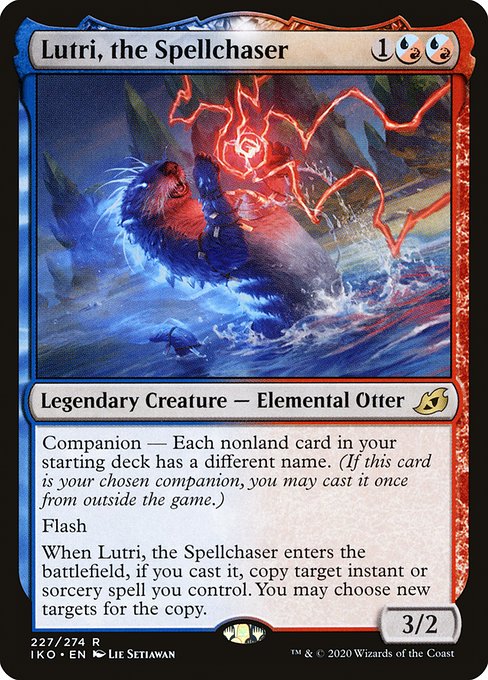
There certainly is Lutri, the Spellchaser, who was banned in advance of even being previewed. But, having not played against a companion since the errata, I don’t feel right judging that example. In terms of older cards being banned in recent history, I can certainly understand how Flash paid for the sins of Protean Hulk, though.
This week, I would like to take a look at the ban list and give my feedback on the cards that I agree should be on the list and the cards that I think could be reasonably considered to take off the list. My goal isn’t to incite immediate change or imply that the rules committee has made poor choices in the past; historically, I am pretty agreeable when it comes to the ban list. While there are cards that I believe deserve a second chance in the current context versus the context in which they were banned, I do honestly believe that a lot of the cards that the rules committee has identified as not being good for the format would in fact take away from the overall fun of Commander, and I would rather have a format more players want to play over one that solely fits my own tastes.
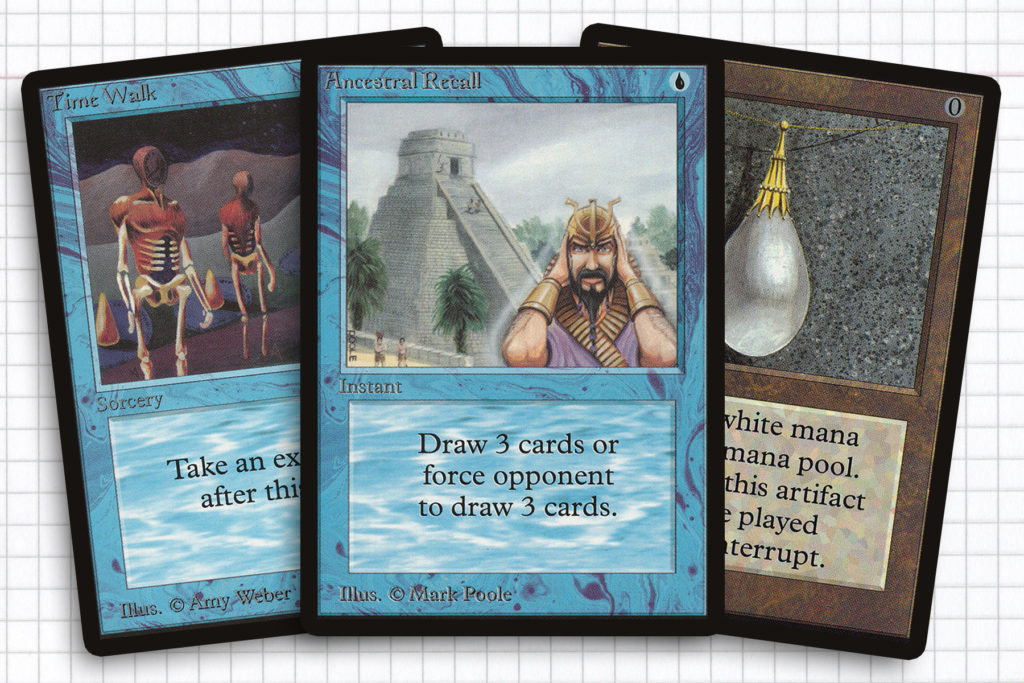
The Power Nine
Before exploring the bulk of the article, I thought it important to hit the cards that are frankly too easy to pick when it comes to identifying cards that are best kept on the banned list, at least for the reason of accessibility. One of the guiding principles of the Commander ban list is that it’s trying to craft a format that is friendly to casual players, but I would wager that the rules committee is also combating a perceived financial barrier to entry. In principle, a player new to the format should not look at an active Commander game and feel priced out, simply because cards worth several thousand dollars are being played.
To me, cards like the Moxen, Black Lotus, and Time Walk are too good, even if they were not also prohibitively expensive. But honestly, if Ancestral Recall was the price of another Commander staple, like Sol Ring? I don’t think it would actually be overpowered in a four person game. This is not to say that Ancestral Recall is not a powerful card; it is, but I don’t know that a singleton copy warps games as much as the rest of the Power Nine. In fact, there are five cards I’d definitely keep on the ban list over the draw spell.
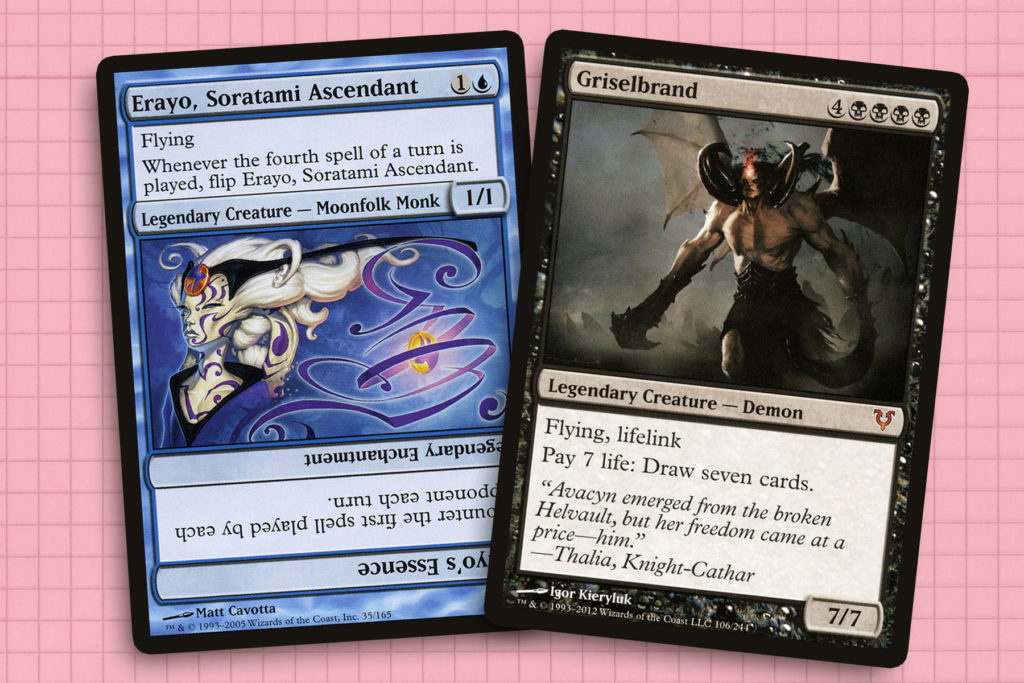
Staying Power
If there is one thing I do not want in a game of Commander, it’s a game state where nothing happens. I can appreciate that in competitive formats some decks grind the tempo of a game to a halt as you try your best to edge out a victory against a clock. But, when I sit down to play a game of Commander, I’m there to actively be a part of the game. That’s why I’m in support of Leovold, Emissary of Trest and Erayo, Soratami Ascendant residing on the ban list.
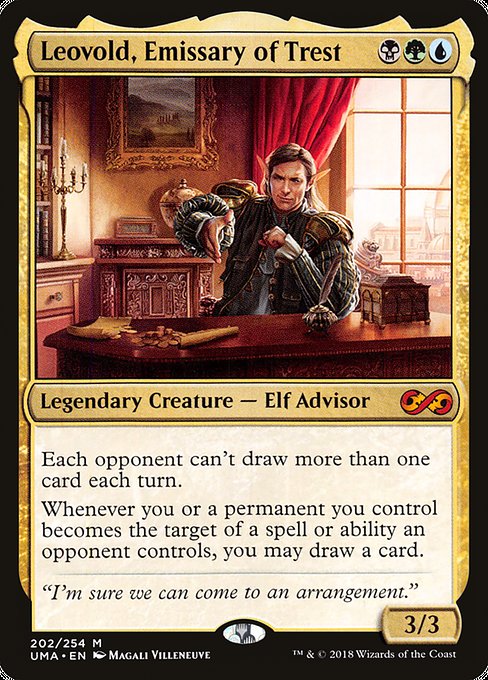
While I only had the pleasure of sitting down against a Leovold deck once, I can tell you it was far from fun. If it’s not obvious, the basic plan was to run out the general and then cast a spell like Windfall to empty everyone else’s hands to almost nothing. I was surprised less by the banning and more by the eight months it took to happen. While Leovold creates unfun situations, Erayo, Soratami Ascendant creates miserable games that feel like they last an eternity.
Erayo is a good example of the weird history of the Commander ban list. If memory serves, there was a time when it was banned only as a general, along with cards like Braids, Cabal Minion. These kinds of special cases were removed at some point, making for a binary banned/legal status. All this to say, I’ve never had to play against a deck that reliably had her out within the first two turns of the game. I’m happy with that, because even the threat of an Erayo flipping out of the 99 was too much for games to handle.
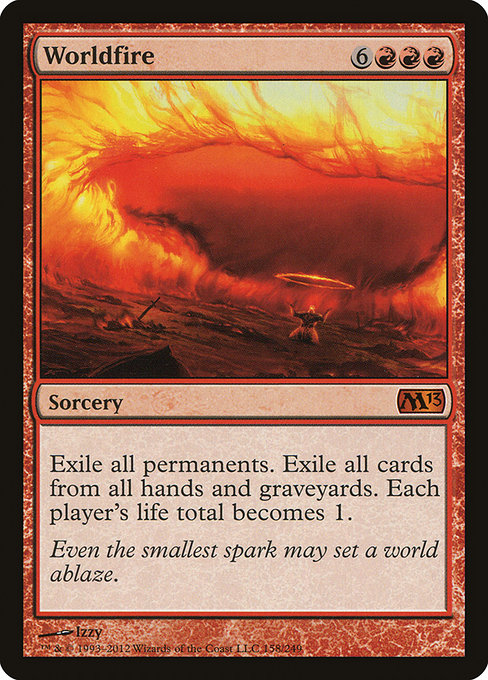
At the other end of the spectrum of do-nothing board states, Worldfire is a good example of a card I believe Wizards specifically engineered for Commander without really understanding why most Commander players are drawn to the format. For the health of the format and the sanity of players, it’s best that this card stays banned. I will admit, though, that there are some thought experiments that start with this card resolving that I love to think through. Bonus points if Jhoira of the Ghitu isn’t your general.
Ironically, a debate could be made that as a nine-mana spell that doesn’t win the game on the spot, this card isn’t banworthy. But I think a good rule of thumb when evaluating if a card like Worldfire could be played in Commander is asking what happens if the card hypothetically gets put on the stack in the middle of a developed game? In this case, I would imagine that most of the players would either drop out on the spot or begrudgingly try to find a path to victory while not having fun. Even if it’s out of spite, I hate playing Commander when it’s not fun.

I don’t remember precisely how long Griselbrand was allowed to be played in Commander before it was banned—it wasn’t long, though. I never had the misfortune to play against it at any Commander table. In a vacuum, Griselbrand seems reasonable in a metagame that hasn’t experienced an arms race and the players haven’t escalated to doing extremely degenerate things. But, having played against it in Cube, I know that a constructed deck built for maximizing Griselbrand is going to be a bad time.
This all fits into a similar perceived barrier to entry as the Power Nine, but not due to the monetary cost of Griselbrand—rather his blatant power level. In a format where you start with twice the life, this card becomes disproportionately overpowered in a way that doesn’t cater well to a casual playgroup. Even if you were ready to aim an Anguished Unmaking at your opponent’s Griselbrand, they could then decide to draw upwards of 35 cards and just pick the best seven on their discard step—and probably cast their general again next turn. To keep the metagame healthy and lessen the amount of completely busted decks in the world, Griselbrand has to pay the ultimate cost.

Panoptic Mirror is one of those oddities of the ban list that I very frequently forget is banned when outlining a deck list. Every time, I lament that I can’t imprint dumb spells like Kindred Charge or Storm Herd on it. But ultimately, I never question the decision to ban it. The ability to imprint a Time Walk effect completely negates any other creative thing you could do with it.
What’s worse is that you don’t even need to have the broken instant or sorcery in your hand when casting it, like Isochron Scepter; you can imprint a draw or tutor spell and just find something that breaks upon repeated use—that’s the factor that justifies its banning. I don’t feel there is enough nuance to what can be done with it to really justify the singleton-breaking nature of the card, and I also don’t think anyone is really begging for it to be unbanned—even the mad scientists benignly looking to imprint Boros Charm on it.
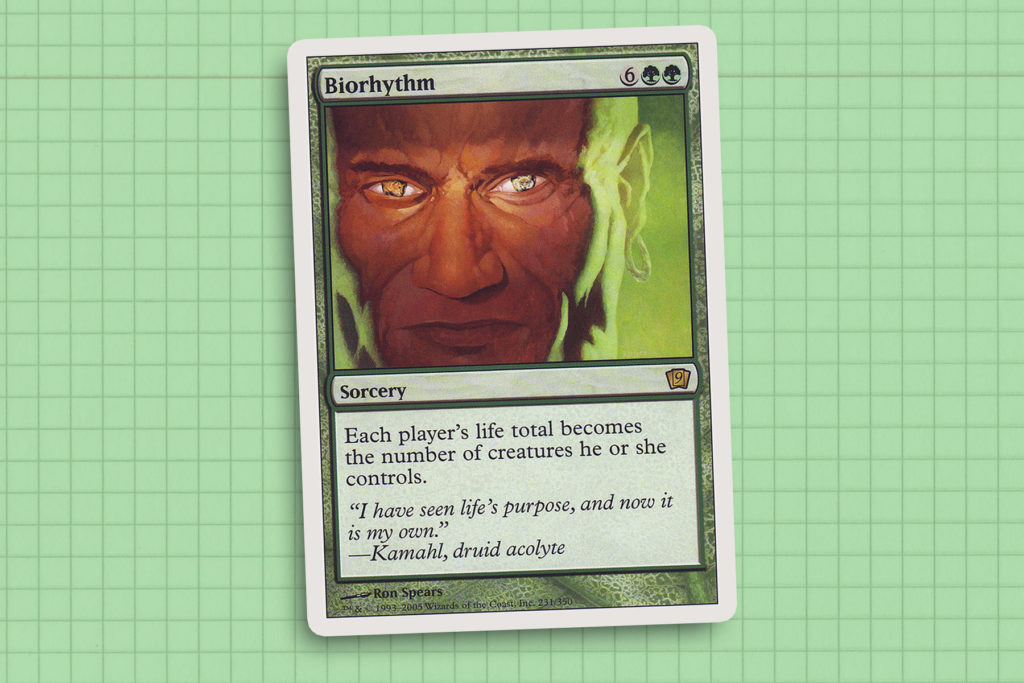
Agree to Disagree

Moving into the cards I believe deserve a second look, let’s go back to my hypothetical question in regards to Worldfire and ponder what happens if Biorhythm gets put on the stack without warning during a developed game of Commander—say, around turn seven. I assume there are going to be Voltron players that suddenly find themselves on the back foot, but I don’t think anyone is losing or quitting on the spot. And, topdecked late in the game, I think it drives the game to a definitive ending without dragging things out.
I understand that Biorhythm was banned because as a green spell, it’s not crazy to assume that this could get cast on turn five, with its controller having a dozen tokens and mana elves. On the other hand, it’s not 2012 anymore; we live in a world of Teferi’s Protection phasing players out of the game and Expropriate giving players the choice of how they will lose to the spell’s controller. Green has been good for much of the last ten years, but I think some of that comes from creatures having become more critical to the game as a whole in that time. As such, even in the face of Kinnan, Bonder Prodigy, I don’t believe Biorhythm detracts from the format anymore.
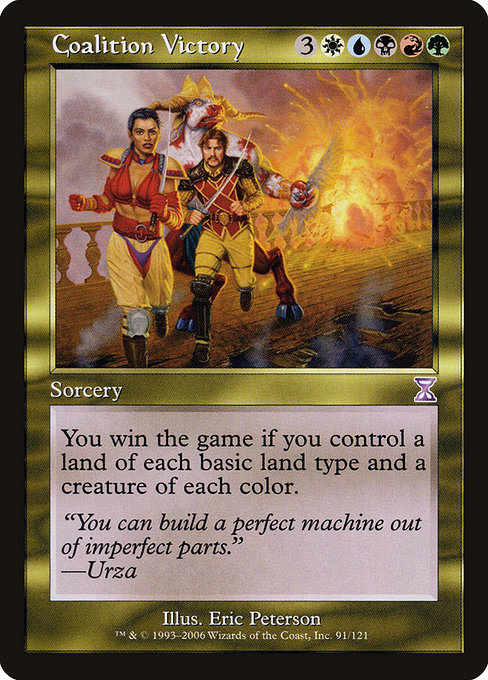
The case for Coalition Victory becomes a little trickier every year, as more five-color generals and basic-typed lands—like the Ikoria Triomes—see print. The chance that this would become ubiquitous upon an unban is real. For all of my historical knowledge, I don’t actually know the reason why the rules committee banned this card. I have to assume that it is an alternate win condition that they felt was unsportsmanlike and too easy to achieve with a five-color general waiting in the command zone.
Frankly, if my five-color opponent can meet all the requirements to cast Coalition Victory, I would assume they have it and plan my counter magic accordingly. And similar to Biorhythm, at eight converted mana cost, there are a lot more cards that win the game and leave a sour taste in people’s mouths. Some decks need an emergency button when games have gone on too long; this could be that. And on the flip side, as a primary win condition, I would find this to be a lackluster and hollow victory. It’s possible the rest of the table would too and the social contract would disincentivize it over time.
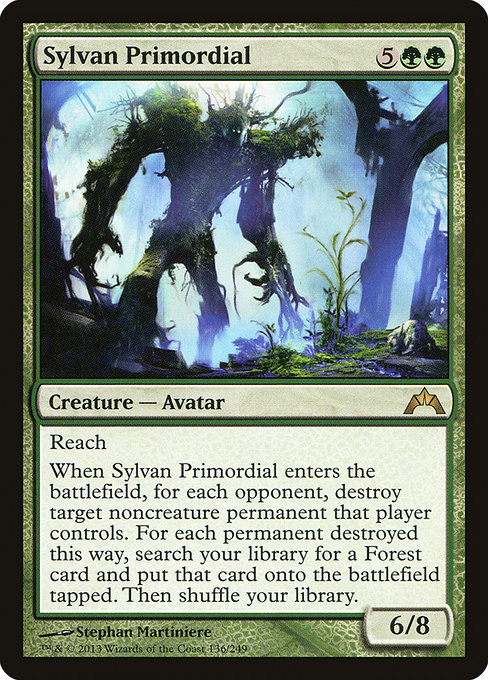
Lastly, we finish on a card that I would like to use as a barometer for the possibility of one day unbanning Primeval Titan. Honestly, I don’t think we are there yet, and these cards are not the same power level—though I do believe that they warped play around them in a similar way. In the games that I have played where Sylvan Primordial or Primeval Titan were on the battlefield, they became the most stolen or copied permanent in play. There is an argument to be had that a card like Sylvan Primordial warps games, as it preys upon weaknesses that not all decks are properly prepared for, like recursion and copy effects. But the performance of Windgrace’s Judgment in the last two years and a long history with Terastodon, leads me to believe that a creature that hits multiple noncreature permanents and ramps you upon entering the battlefield may not be as debilitating as it used to feel.
I’ve taken up quite a bit of your time this week, but I hope that it was a fruitful thought exercise. What card that I did not mention do you either strongly believe deserves to stay where it’s at or could we reasonably be introduced back into the Commander format? I know at least a few readers have expressed that they play with groups that ignore the ban list and I have to wonder if there are cards that become problematic in that sphere, that are outside of our current worries. Until next time, thanks for reading.
Ryan Sainio is a Graphic Designer who writes about EDH and the EDH community. He has been playing Magic: The Gathering since 7th Edition in 2002 and values flavorful and fun gameplay over competitively optimized decks.

